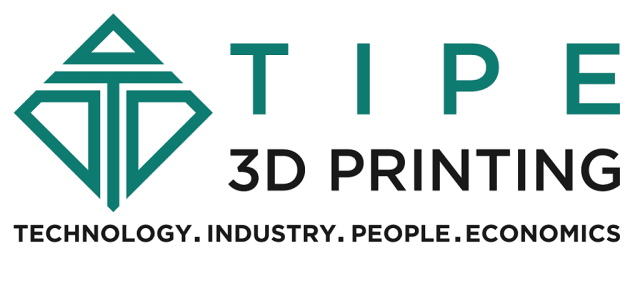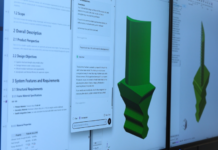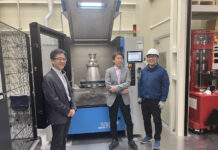I am not sure if one article will ever be sufficient to summarize the TIPE 3D Printing conference, organized by Women in 3D Printing last week. The digital event that took place on January 27th and 28th gathered 1600 people across the world who were willing to present and listen to impactful presentations and panels on five tracks: Technology, Industry, People, Economics, and Youth.
The conference started with a powerful keynote session from Dr. Sara Safari, author, speaker, mountain climber, college professor, Electrical Engineer and advocate for women empowerment, setting the tone for two exceptional days for the 3D printing industry. The TIPE 3D Printing conference is really one of its kind. This is not only because it is the first all-female agenda of speakers and panelists, but mainly because, for the first time, a 3D printing conference addresses more than just technology issues.
After careful analysis, from an organization that is on a mission to promote, inspire and support women within the AM industry, it makes sense. This spirit was in fact, clearly reflected in the virtual space.
If the event amplified the need for more inclusiveness, it also showed through the number of sponsors that companies are ready to take this issue seriously. Executives from leading AM groups, players from the academic community, government organizations, non-profits but most importantly engineers that we do not always see – yet have an incredible personal journey shared key insights into a wide range of fields including metal AM, healthcare, social activities and even the economics of 3D printing.
I spent two days at the TIPE 3D Printing conference while juggling with the time zone differences and the usual work at 3D ADEPT Media (the beauty of a digital event indeed). I have listened to unique presentations and “hard to qualify” panels, I have talked with so many old friends and new faces in the AM industry, trying to get their point of view from the event.
In the end? No point of view is similar to the other – and with good reason. The question was not about to find out how people found the event, but mostly what they were looking for, what brought them to the TIPE conference.
Many were looking for their dose of courage to pursue the next phase of their career or personal projects while others were looking for leads. Another group of people was looking to understand the 3D printing world from industry insiders and AM users while another one was there to network.
I will not pretend that I have listened to all panels and presentations – it was simply not possible but I learned one thing or two from some of the tracks that I would like to share today.

Technology and Industry Tracks
Those two tracks mainly discussed the current state of the additive manufacturing market from the AM technologies providers’ perspective and from the users’ perspective. They were mostly designed for advanced users who were looking to stay up-to-date on the latest trends in the AM industry.
The big ideas consisted in exploring the current advancements in terms of materials, metal AM and the new paradigm in digital workflows and manufacturing 4.0.
The industry track, on the other hand, highlighted the user perspective, the way early-stage founders are using AM to build the next generation of end-products. Among all conversations, one that distinguished itself from others of the same range is the panel “creating new consumer usage of AM”.
The panel gathered Claire Chabaud (Founder, FusionBra), Marine Core-Baillais (Founder, the Digital Patisserie), and Danit Peleg (3D printed Fashion Designer), three women who do not necessarily have the engineering background that brings a certain credibility to innovations but who have managed to find their own path in the industry by creating genuine and technology-enabled products. The panel did not only give an insight into what they develop, but it also highlighted new consumers’ requirements that need to be satisfied. There is no certainty about the fact that end-consumers will ever be interested in discovering all the features of the technology used to manufacture their products. However, one should keep in mind that they keep questioning themselves about what they consume, and most importantly, about the way the product will directly affect and change their life. The need for more customized 3D printed products is no longer a simple whim, as for some products it refocuses the debate around one single question: “how does it affect my life and well-being?”
People and Economics Tracks
Those tracks were about “making the difference” in one’s career, in the way one develops a product/service, and in the way one wants his/her company or team to grow.
From marketing tips to launch and develop a product in the technology industry (Susanne Trautmann) to human-centered innovations and ways to manage an AM career (Adeola Olubamiji), those tracks were focused on how to grow personally and professionally.
Among all presentations and panels, one that stood out from the crowd is “how to be a CEO in AM”. Moderated by Debbie Holton – Managing Director, ASME, the panel shed light on insights from Ellen Kullman (President and CEO, Carbon), Kay Matin (President AlphaSTAR), Melanie Lang (CEO, formAlloy), and Christina Perla (CEO, Makelab).
In an increasingly application-centric industry, the coming years are likely to see the emergence of more startups – using 3D printing in the development of their products. For those new entrants but also the existing CEOs that are striving to make their mark in the industry, some takeaways are worth considering.
Not surprisingly, each CEO comes with a unique experience that will determine the way he/she will lead in times of stress or from day to day. Kullman for instance brings several years of experience in leadership roles within leading companies across several industries. Matin built up extensive experiences in leading SMEs during the past 30 years. Lang brings the experience and expertise she gained in aerospace and applies this technology expertise in her AM company. As for Perla, she reflects the entrepreneurial mindset as she is turning Makelab into a premium 3D printing service bureau focused on a corporate culture where “acting fast” is one of the keys to success.
While leading companies often seem to have more resources to be flexible in times of stress, Kullman explains that these are times you can’t control. However, in these times, people should be able to recognize your creativity and resiliency.
In an SME on the other hand, Matin explains that the dynamics are different. It will be about understanding the issues the team is going through, being supportive in order to maintain cohesion and consistency in the work.
Furthermore, Perla believes that one thing that makes female CEOs outstanding is their ability to “listen to others, trace the entire picture, read that and take actions”. This being said, she always keeps one credo in mind: “Make small and bold moves so that people recognize you in your actions”.
Lastly, whether you are a man or a woman leading a company, your mission will be to make that company grow. For Lang, whether you are an early-stage founder or not, you should always be able to make the difference between “sponsor and mentor”: “A mentor will give you advice. A Sponsor will help you implement the plan you have. Both will bring you different forms of support that will help you achieve your goals.”
The Youth Stage
This stage did not receive the same exposure as others from the beginning but its place was pivotal for the next generation of engineers who were looking for a model to have in their career or a starting point to take their first steps into 3D printing.
Among the speakers of this session, Njideka Harry, President of YouthForTech highlighted the latest activities her organization has carried out for girls and boys in Nigeria (Africa) and her willingness to pursue this journey in the USA.
Young engineers learned in a very fun way the “declassified metals survival guide” from Metal AM enthusiast SJ while others were inspired by the unusual yet exceptional journey from Space lover Eliana Fu.
These names are just a few among 147 that drew attention at the TIPE Conference but there are a lot more to discover and talk about.
This might be the first industry event of 2021, but we will keep one thing in mind: when women are joining forces to amplify their voices, they break the glass ceiling.
Remember, you can post job opportunities in the AM Industry on 3D ADEPT Media free of charge or look for a job via our job board. Make sure to follow us on our social networks and subscribe to our weekly newsletter : Facebook, Twitter, LinkedIn & Instagram ! If you want to be featured in the next issue of our digital magazine or if you hear a story that needs to be heard, make sure to send it to contact@3dadept.com






